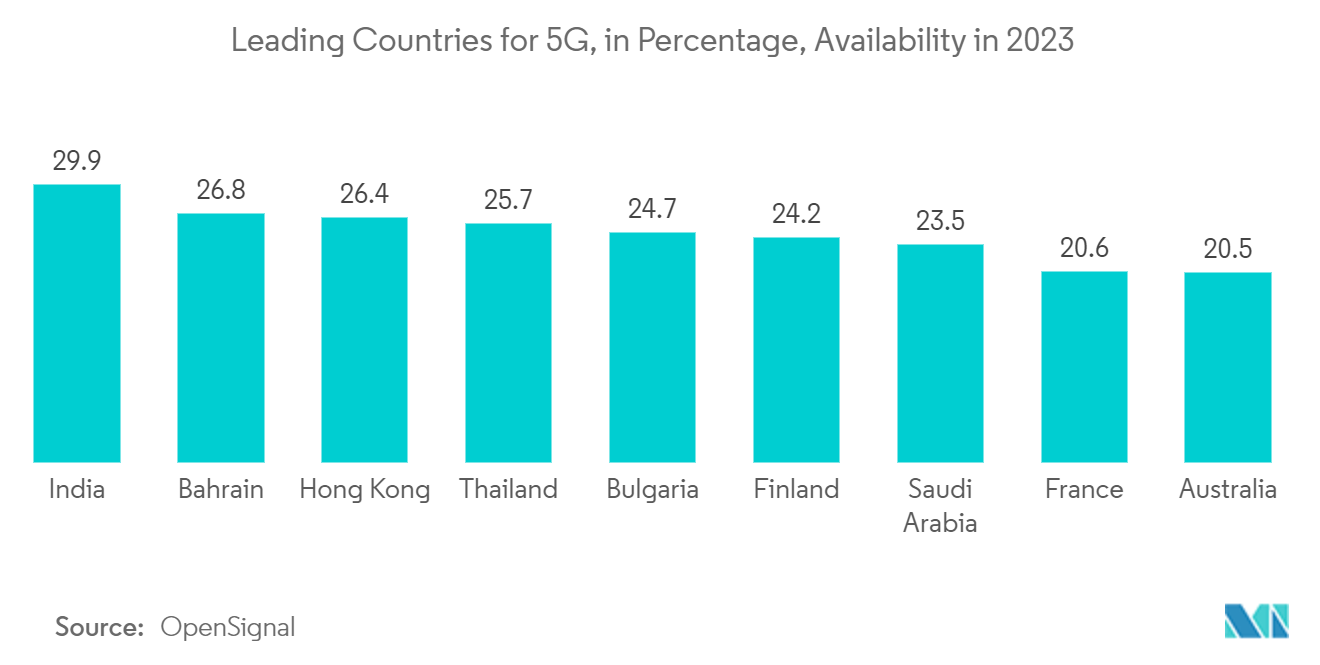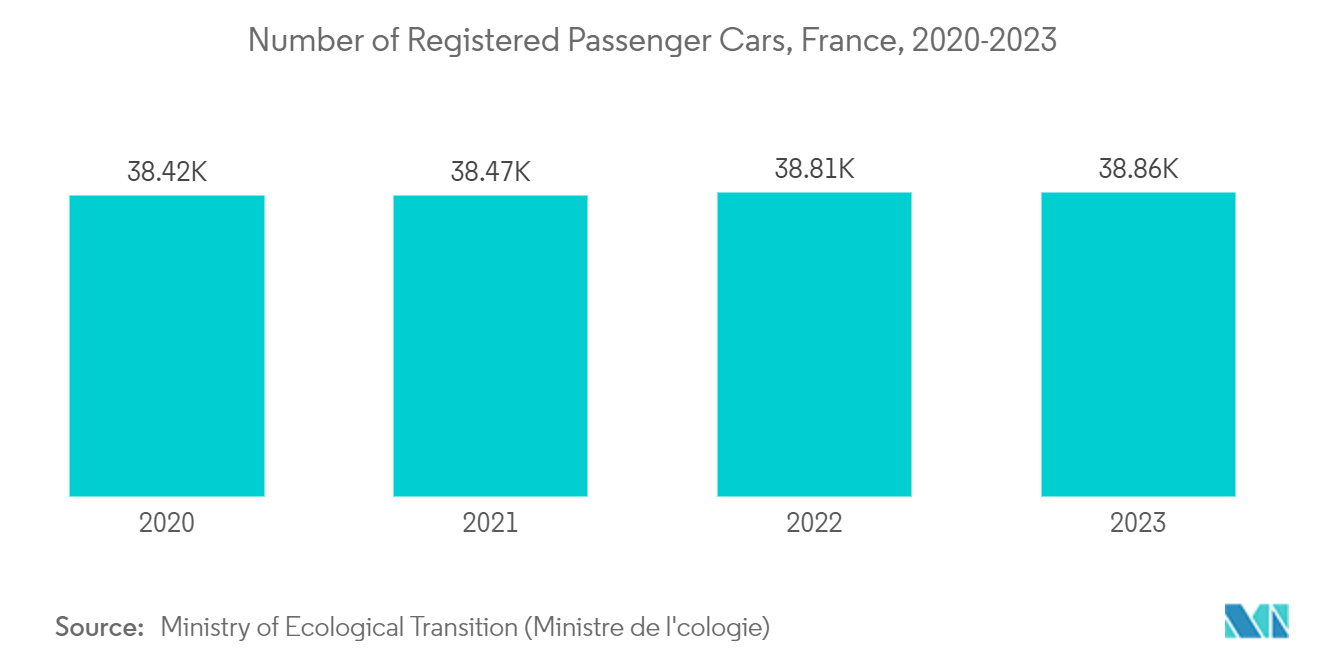Market Trends of France Geospatial Analytics Industry
Increasing Adoption of 5G in France is Boosting the Market Growth
- The emergence and deployment of fifth-generation (5G) wireless technology have revolutionized the digital landscape, offering unprecedented data speeds, low latency, and enhanced connectivity. As one of the frontrunners in 5G implementation, France has witnessed a surge in technological advancements and opportunities. One such sector experiencing significant growth is geospatial analytics. Geospatial analytics leverages location-based data from various sources, such as satellites, sensors, and mobile devices, to gain valuable insights and make informed decisions.
- Looking at the growing demand for 5G for technological advancement, the government of France revealed that by 2025 it will spend around 1.7 billion Euro through public and private investments under its 5G and future telecommunications plan. Through this investment, the government aims to accelerate the development of 5G, particularly new use cases, to drive adoption and enhance the impact of the technology on other industries.
- Geospatial analytics powered by 5G provides unparalleled precision and accuracy in location-based services. With 5G's ability to handle massive amounts of data in real-time, geospatial applications can offer precise navigation, asset tracking, and geofencing services. This has led to significant advancements in various sectors, such as logistics, public safety, and healthcare.
- Moreover, in logistics, businesses can track shipments in real-time, improving supply chain management and reducing delays. Emergency services can utilize accurate geolocation data to respond faster to incidents and save lives. In the healthcare sector, 5G-enabled geospatial analytics has enhanced patient care through location-based tracking of medical assets and resources.

Growing Demand of Geospatial Analytics in Location Tracking
- Geospatial analytics in location tracking is a process that involves analyzing and interpreting data related to geographic locations. It combines geospatial data (information with a specific location component, such as latitude and longitude) with other data sources to gain valuable insights, patterns, and trends.
- The foundation of geospatial analytics in location tracking is the collection of location data through various technologies like GPS (Global Positioning System), RFID (Radio Frequency Identification), or other tracking devices. These technologies allow real-time and historical tracking of assets, vehicles, or individuals. It also combines location data with other relevant datasets, such as demographic information, weather data, traffic patterns, social media posts, and spatial databases. Integrating this diverse information can provide a more comprehensive understanding of the context and patterns related to specific locations.
- With the growing use of geospatial analytics in location tracking. Many companies are coming up with new and upgraded GPS solutions. For instance, in December 2022, LoRaWAN, a major supplement auto insurance company, announced the launch of its next-generation geolocation solution for a mobile app named Wetrak. This solution is launched to find lost or stolen cars, reducing insurance costs.
- Moreover, the French government has also started adopting these technologies to improve their law in the country. Hence, in July 2023, France's government passed a law allowing investigating and enforcement agencies to remotely activate microphones, cameras, and GPS location systems on their phones and other devices of people under surveillance.
- Also, location tracking data can be used to optimize routes for vehicles and assets, reducing travel time, fuel costs, and carbon emissions. This is particularly useful in the logistics and transportation industries. This also offers valuable location-based insights to businesses and organizations. For instance, it can help retailers identify the best locations for new stores based on customer demographics and competitor locations.


